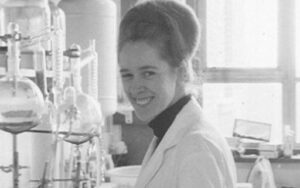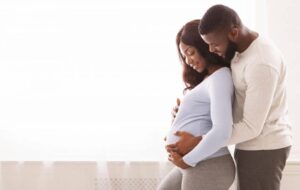 More Than 71K Babies Born, and Fewer Multiples
#DYK that more babies are being born from assisted reproductive technology (ART) in the U.S. than ever before, and that the outcomes are better for both mothers and babies? The latest national and clinic-specific data on ART were recently released by SART, the Society for Assisted Reproductive Technology. Preliminary numbers for 2016 show that 71,296 babies were born as a result of 242,618 IVF cycles, and that the percentage of multiple births actually decreased. This is good news for anyone considering IVF!
A Trend Toward Transferring Fewer Embryos
As ART has improved over time, transferring three or more embryos has become much less frequently needed to ensure success in IVF. While in some cases multiple embryos are still needed, more and more people are choosing elective single embryo transfer (eSET). Transferring a single embryo virtually eliminates the chance of having a multiple birth, and especially of high order multiples like triplets or quadruplets.
According to SART data, the use of eSET transfer increased to 42.2 percent across all age groups in 2016 from 34.5 percent in 2015. In 2016, each patient age group showed both increased eSET use and a decrease in average numbers of embryos transferred per cycle, from the previous year. Because fewer embryos were transferred, there was a reduction in ART multiple births from 2015 to 2016. Singleton babies born from ART in 2016 increased to 84 percent, from 80.5 percent in 2015. The percentage of twins from IVF cycles in 2016 decreased to 15.6 percent, down from 19 percent in 2015. The percentage of triplets stayed the same at 0.4 percent.
Why Fewer Multiple Births Are Important
You may wonder why it matters that fewer twins and high order multiples are being born. Multiple births are higher risk for both mothers and babies. The babies are more likely to be born prematurely, have low birth weight, or to suffer from lasting disabilities due to prematurity than singletons are. The health risks to mothers are significant, too, including preeclampsia, gestational diabetes, and need for a Caesarian delivery. And many people underestimate the difficulty of caring for two or more infants at the same time. Being pregnant with one child is healthier for both mother and baby. Increasingly, one healthy baby at a time is the goal of many reproductive endocrinologists.
So it’s encouraging that more than 4,000 additional babies were born in 2016 with IVF than in 2015, while fewer embryo transfers were done. This showcases that IVF treatment is becoming even more effective than in the past, with increased safety for mothers and babies.
More Than 71K Babies Born, and Fewer Multiples
#DYK that more babies are being born from assisted reproductive technology (ART) in the U.S. than ever before, and that the outcomes are better for both mothers and babies? The latest national and clinic-specific data on ART were recently released by SART, the Society for Assisted Reproductive Technology. Preliminary numbers for 2016 show that 71,296 babies were born as a result of 242,618 IVF cycles, and that the percentage of multiple births actually decreased. This is good news for anyone considering IVF!
A Trend Toward Transferring Fewer Embryos
As ART has improved over time, transferring three or more embryos has become much less frequently needed to ensure success in IVF. While in some cases multiple embryos are still needed, more and more people are choosing elective single embryo transfer (eSET). Transferring a single embryo virtually eliminates the chance of having a multiple birth, and especially of high order multiples like triplets or quadruplets.
According to SART data, the use of eSET transfer increased to 42.2 percent across all age groups in 2016 from 34.5 percent in 2015. In 2016, each patient age group showed both increased eSET use and a decrease in average numbers of embryos transferred per cycle, from the previous year. Because fewer embryos were transferred, there was a reduction in ART multiple births from 2015 to 2016. Singleton babies born from ART in 2016 increased to 84 percent, from 80.5 percent in 2015. The percentage of twins from IVF cycles in 2016 decreased to 15.6 percent, down from 19 percent in 2015. The percentage of triplets stayed the same at 0.4 percent.
Why Fewer Multiple Births Are Important
You may wonder why it matters that fewer twins and high order multiples are being born. Multiple births are higher risk for both mothers and babies. The babies are more likely to be born prematurely, have low birth weight, or to suffer from lasting disabilities due to prematurity than singletons are. The health risks to mothers are significant, too, including preeclampsia, gestational diabetes, and need for a Caesarian delivery. And many people underestimate the difficulty of caring for two or more infants at the same time. Being pregnant with one child is healthier for both mother and baby. Increasingly, one healthy baby at a time is the goal of many reproductive endocrinologists.
So it’s encouraging that more than 4,000 additional babies were born in 2016 with IVF than in 2015, while fewer embryo transfers were done. This showcases that IVF treatment is becoming even more effective than in the past, with increased safety for mothers and babies.
IVF is Better Than Ever
 More Than 71K Babies Born, and Fewer Multiples
#DYK that more babies are being born from assisted reproductive technology (ART) in the U.S. than ever before, and that the outcomes are better for both mothers and babies? The latest national and clinic-specific data on ART were recently released by SART, the Society for Assisted Reproductive Technology. Preliminary numbers for 2016 show that 71,296 babies were born as a result of 242,618 IVF cycles, and that the percentage of multiple births actually decreased. This is good news for anyone considering IVF!
A Trend Toward Transferring Fewer Embryos
As ART has improved over time, transferring three or more embryos has become much less frequently needed to ensure success in IVF. While in some cases multiple embryos are still needed, more and more people are choosing elective single embryo transfer (eSET). Transferring a single embryo virtually eliminates the chance of having a multiple birth, and especially of high order multiples like triplets or quadruplets.
According to SART data, the use of eSET transfer increased to 42.2 percent across all age groups in 2016 from 34.5 percent in 2015. In 2016, each patient age group showed both increased eSET use and a decrease in average numbers of embryos transferred per cycle, from the previous year. Because fewer embryos were transferred, there was a reduction in ART multiple births from 2015 to 2016. Singleton babies born from ART in 2016 increased to 84 percent, from 80.5 percent in 2015. The percentage of twins from IVF cycles in 2016 decreased to 15.6 percent, down from 19 percent in 2015. The percentage of triplets stayed the same at 0.4 percent.
Why Fewer Multiple Births Are Important
You may wonder why it matters that fewer twins and high order multiples are being born. Multiple births are higher risk for both mothers and babies. The babies are more likely to be born prematurely, have low birth weight, or to suffer from lasting disabilities due to prematurity than singletons are. The health risks to mothers are significant, too, including preeclampsia, gestational diabetes, and need for a Caesarian delivery. And many people underestimate the difficulty of caring for two or more infants at the same time. Being pregnant with one child is healthier for both mother and baby. Increasingly, one healthy baby at a time is the goal of many reproductive endocrinologists.
So it’s encouraging that more than 4,000 additional babies were born in 2016 with IVF than in 2015, while fewer embryo transfers were done. This showcases that IVF treatment is becoming even more effective than in the past, with increased safety for mothers and babies.
More Than 71K Babies Born, and Fewer Multiples
#DYK that more babies are being born from assisted reproductive technology (ART) in the U.S. than ever before, and that the outcomes are better for both mothers and babies? The latest national and clinic-specific data on ART were recently released by SART, the Society for Assisted Reproductive Technology. Preliminary numbers for 2016 show that 71,296 babies were born as a result of 242,618 IVF cycles, and that the percentage of multiple births actually decreased. This is good news for anyone considering IVF!
A Trend Toward Transferring Fewer Embryos
As ART has improved over time, transferring three or more embryos has become much less frequently needed to ensure success in IVF. While in some cases multiple embryos are still needed, more and more people are choosing elective single embryo transfer (eSET). Transferring a single embryo virtually eliminates the chance of having a multiple birth, and especially of high order multiples like triplets or quadruplets.
According to SART data, the use of eSET transfer increased to 42.2 percent across all age groups in 2016 from 34.5 percent in 2015. In 2016, each patient age group showed both increased eSET use and a decrease in average numbers of embryos transferred per cycle, from the previous year. Because fewer embryos were transferred, there was a reduction in ART multiple births from 2015 to 2016. Singleton babies born from ART in 2016 increased to 84 percent, from 80.5 percent in 2015. The percentage of twins from IVF cycles in 2016 decreased to 15.6 percent, down from 19 percent in 2015. The percentage of triplets stayed the same at 0.4 percent.
Why Fewer Multiple Births Are Important
You may wonder why it matters that fewer twins and high order multiples are being born. Multiple births are higher risk for both mothers and babies. The babies are more likely to be born prematurely, have low birth weight, or to suffer from lasting disabilities due to prematurity than singletons are. The health risks to mothers are significant, too, including preeclampsia, gestational diabetes, and need for a Caesarian delivery. And many people underestimate the difficulty of caring for two or more infants at the same time. Being pregnant with one child is healthier for both mother and baby. Increasingly, one healthy baby at a time is the goal of many reproductive endocrinologists.
So it’s encouraging that more than 4,000 additional babies were born in 2016 with IVF than in 2015, while fewer embryo transfers were done. This showcases that IVF treatment is becoming even more effective than in the past, with increased safety for mothers and babies.
Subscribe to stay in the loop
Our newsletter delivers expert insights, practical benefit strategies, heart warming member
moments, and the latest in fertility and family-building news straight to your inbox.



